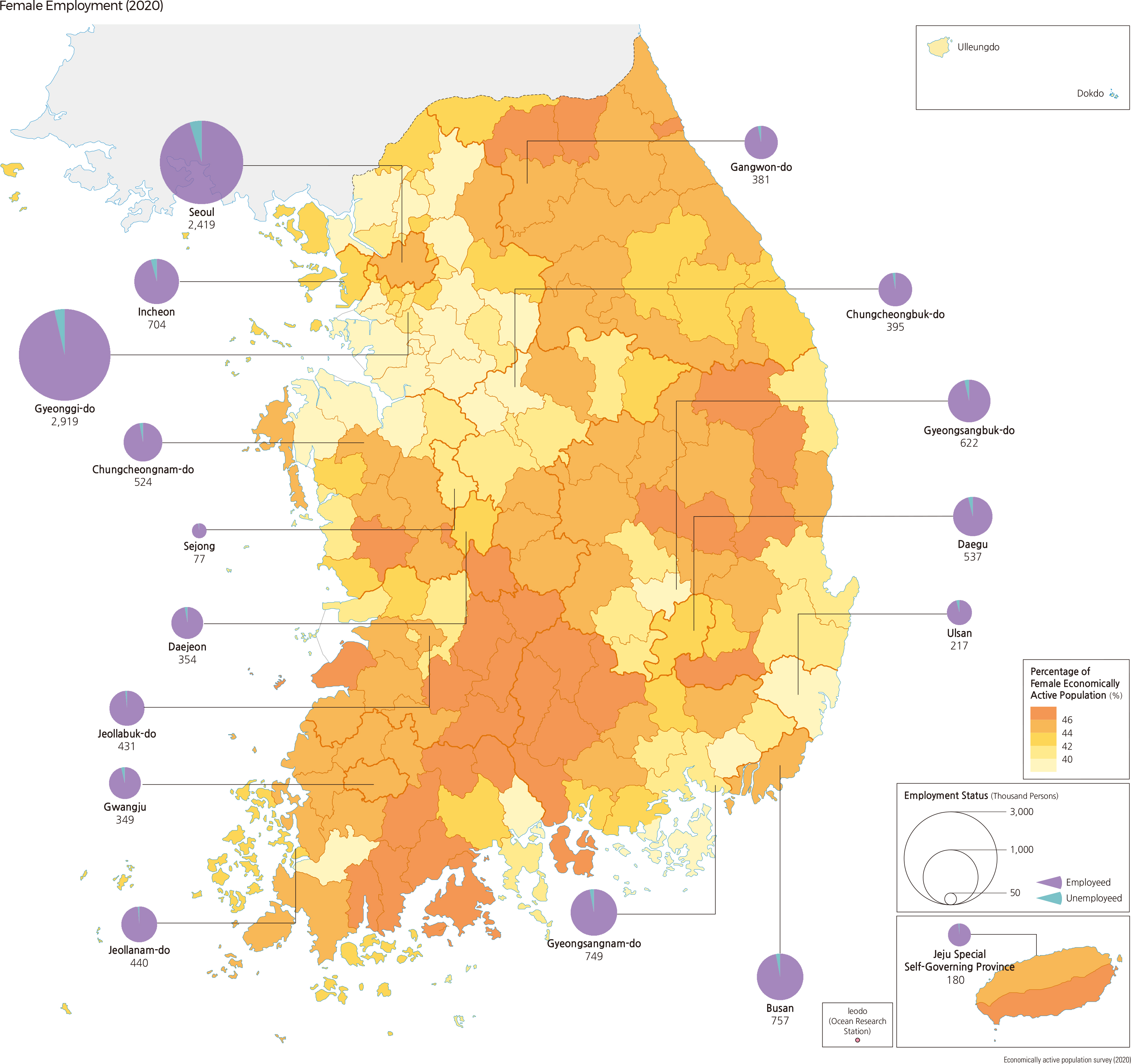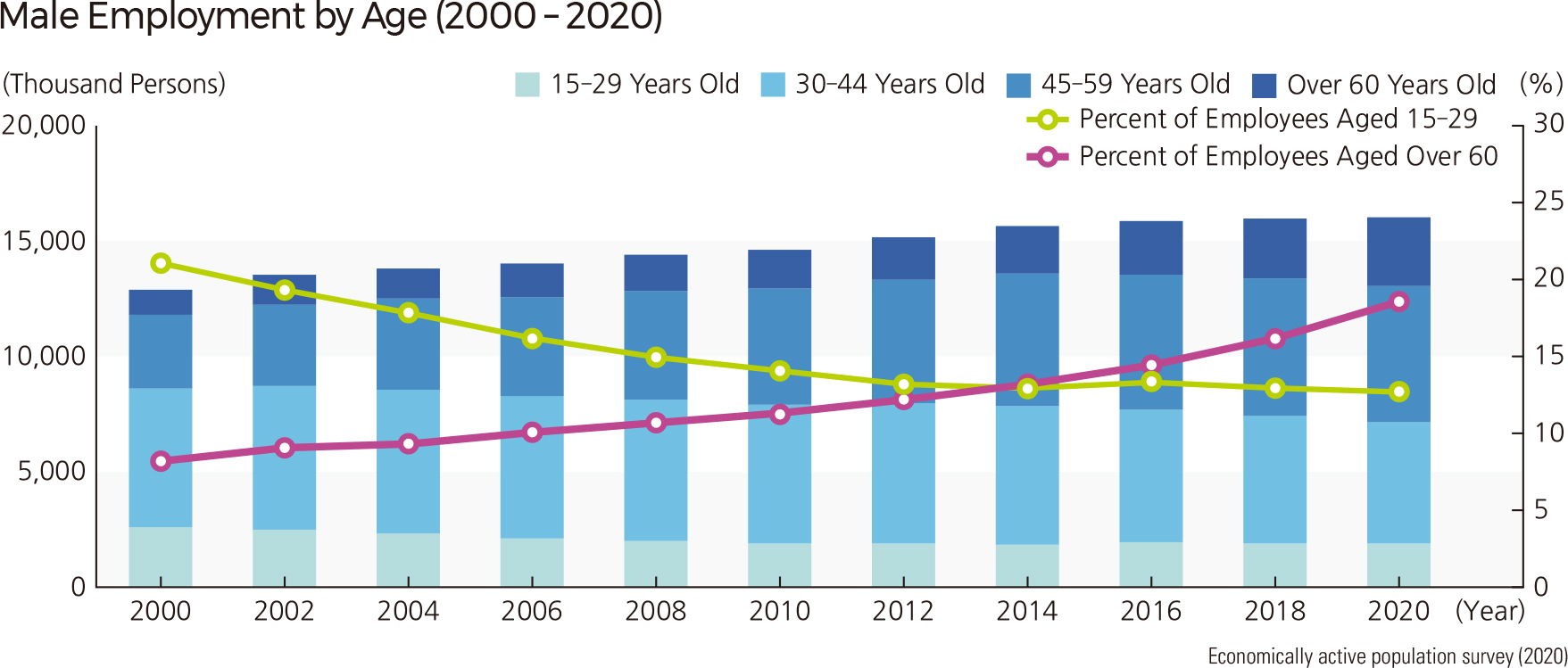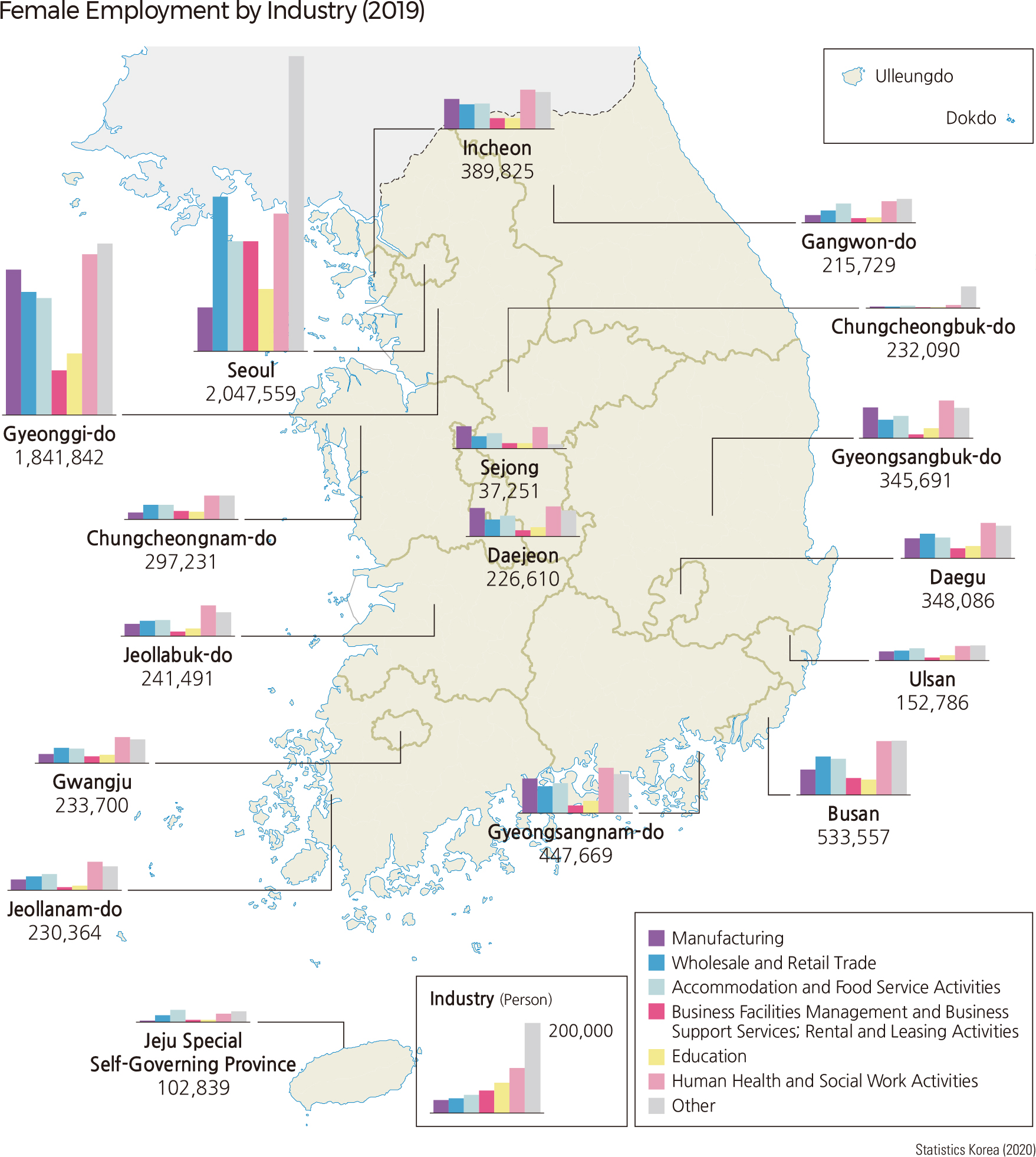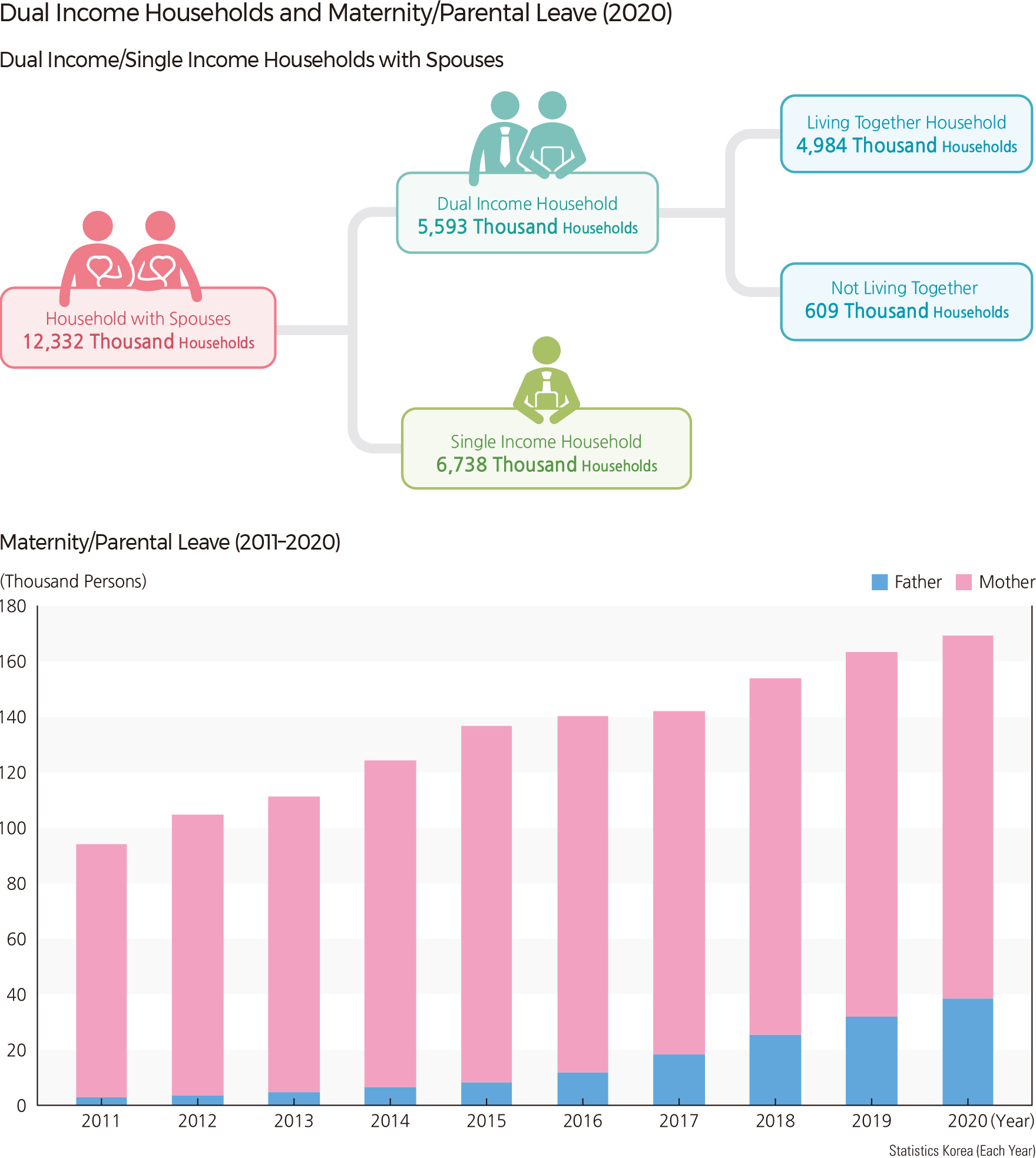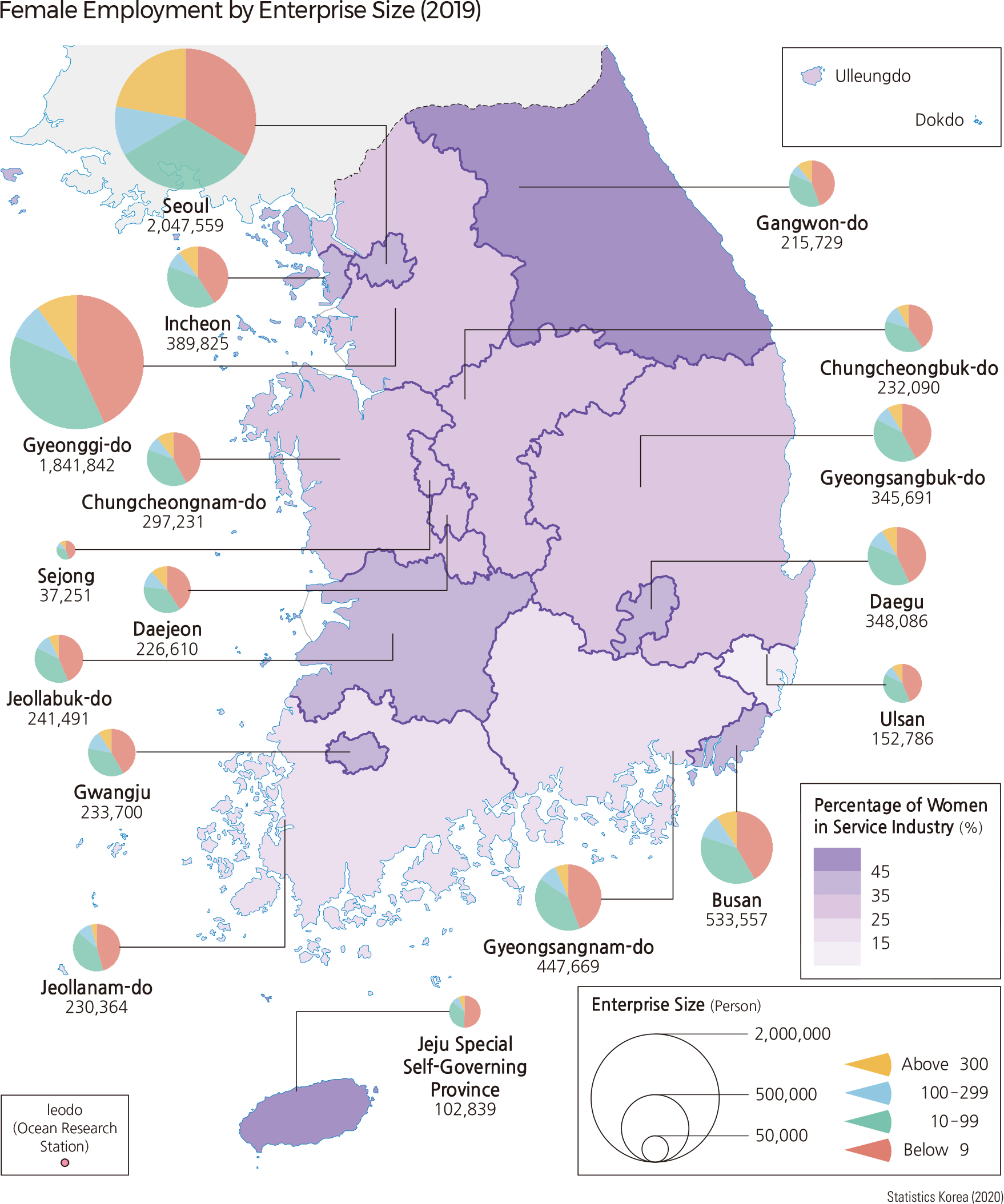English III 2021
Among women aged 15 and over, the labor force participation rate was only 37.0% in 1963, but in 2004, it was 50.1%, exceeding half for the first time in history. Following the global financial crisis in 2009, the rate fell to 49.2%. However, the rate again exceeded 50% in 2012 and increased to 52.8% in 2020. For the past 10 years, women's labor-force participation rate has hovered around 50%, significantly lower than men's (72.6%). However, the number of economically active women steadily increased from 9.1 million in 2000 to 12.0 million in 2020. Looking at the age distribution of women participating in economic activities, 45-59 years old (35.7%), 30-44 years old (28.2%), 60 years old or older (19.2%), and 15-29 years old (16.8%) are the most common. Women aged 30 to 44 have a lower economic participation rate than men because they are burdened with birth-giving and child-rearing. A large proportion of female workers are engaged in service industries such as health and social welfare services, wholesale and retail, lodging and restaurants, business facility management, business support and rental services, and education services. Accordingly, the proportion of women employed to the total employed is higher than the national average in large cities where the service economy has progressed, and the proportion of men is higher in cities and provinces specialized in manufacturing, such as Ulsan. As of 2019, the proportion of women employed in small businesses with nine or fewer employees is higher than that of men, while the proportion of women employed in medium and large businesses with 100 or more employees is somewhat lower. In terms of occupational status, the proportion of regular workers among employed women was 66.8%, which was lower than the proportion of men, and the proportion of temporary and daily workers was slightly higher. The proportion of dual-income households among married households was 45.4% in 2020, remaining in the mid-40% range for the past 10 years. Therefore, the Korean government encourages female workers to balance their work and family and prevent job turnover due to childbirth by implementing maternity support policies such as maternity leave and parental leave. The Korean government also supports female job seekers who have had their careers cut off due to marriage, pregnancy, childbirth, or family caregiving or who have never had a job. |
